Stinging Nettles (Urtica dioica) are amazing plants, rich in Vitamin C and Iron, they provide a very substansial food scource. however they also produce very strong fibres running up the stalks which have been used in the past for clothing and of course string.
mid september and october are the best months to harvist nettles for their fibres, as they have had all spring and summer to grow to a large size yet they should still be alive and unwilted by the frost.when harvesting nettles i find that the side of rides and paths to be the best place, as the large quanitiy of avalible light allows the nettles to grow very large very quickly, larger plants mean longer fibres which makes cordage making alot easier.
Rather than clearing out a large clump of nettles it is more economical to walk along the ride and pick only the best examples of nettles, these will be tall nettles with thick stalks. the ones to avoid are the thin soft nettles and the dry ones that have started to wilt and die.

now there is a method of picking and processing stinging nettles with bare hands without getting stung, for this you will need to grab the plant firmly at the base with one hand and with the other strip the laves off in the direction of the plants growth. despite this method, im going to wear some thick gardening gloves to reduce the chance of being stung even more.
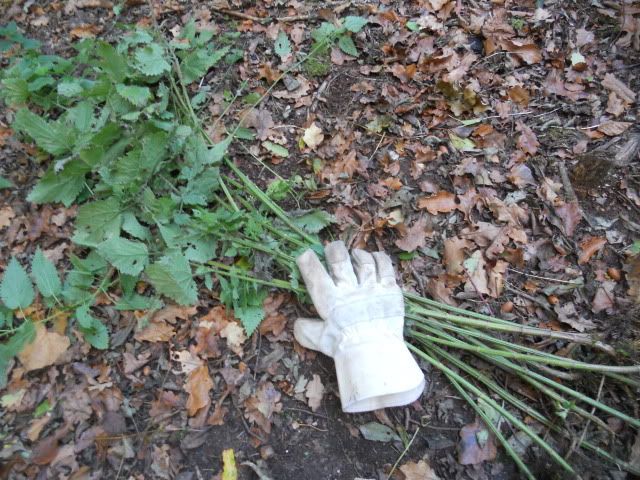
I am going to be making two metres of nettle cordage so im going to collect roughly ten nettles, a good rule of thumb is to harvist more nettles than you think you will need.
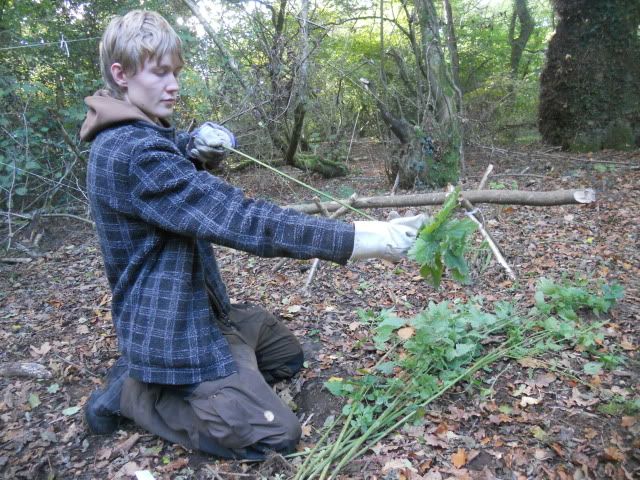
Now i Have collected my nettles the next job is to strip them of thieir leaves, i do this by grasping the base of the nettle firmly with one hand, then i firmly brush the other hand up the nettle in the direction of the plants growth, this will strip the nettle of its leaves and leave me with a clean stalk to work with.
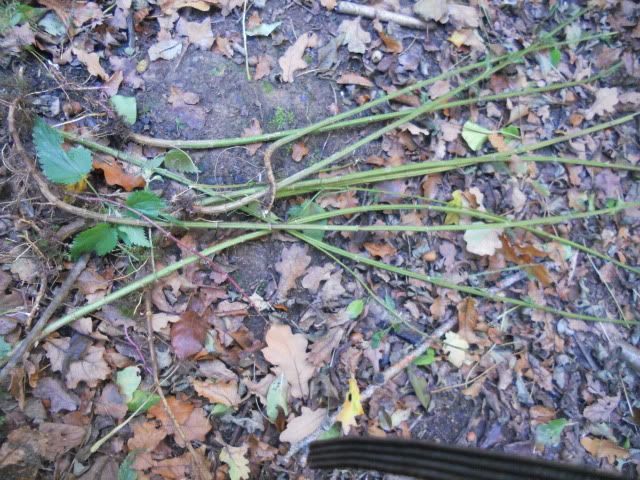
now that the nettles are striped of their leaves that brings me onto the next process, splitting the stem of the nettle.
the best way to do this is with the butt of a knife against a hard surface. I hold the stem of the nettle against the block, and with the butt of my knife i push down on the nettle firmly, working my way up the stem from the base.
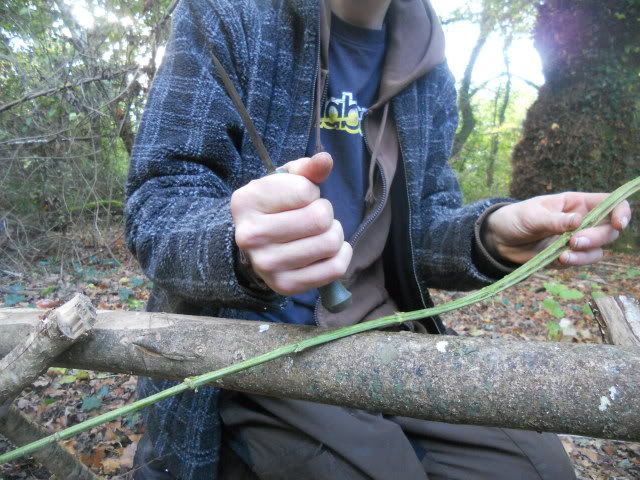
The next process is removing the pith from the nettle. To do this i run my finger down the splits in the stem, graduably opening the stem out.
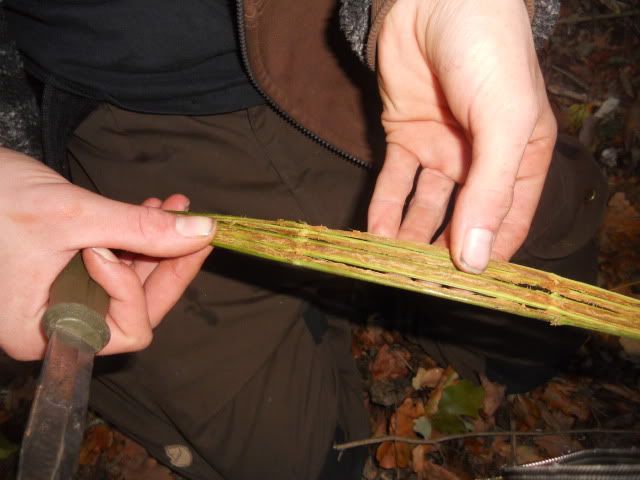
Then i hold the stem with the pith facing up and break it in such a way that the pith snaps but the fibres on the outside of the stem remain intact. Then i peel away the pith with my fingers and disgard it. as its the fibres i need for the cordage.
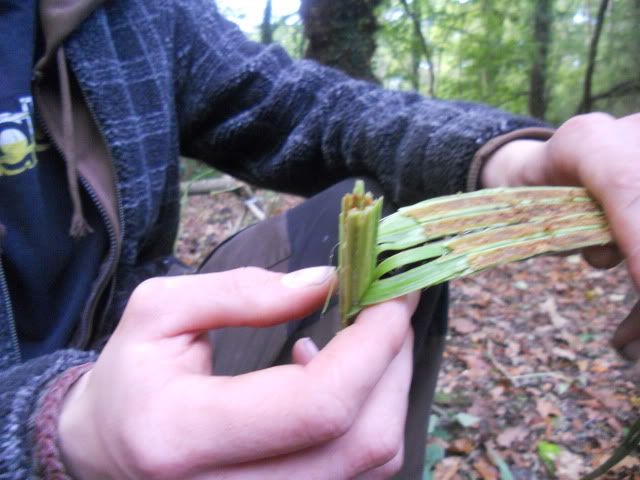
now that i have my fibres separated from the stem i will peel them away from each other carefully, creating gradualy thinner fibres yet trying my hardest to keep them as long as possible.
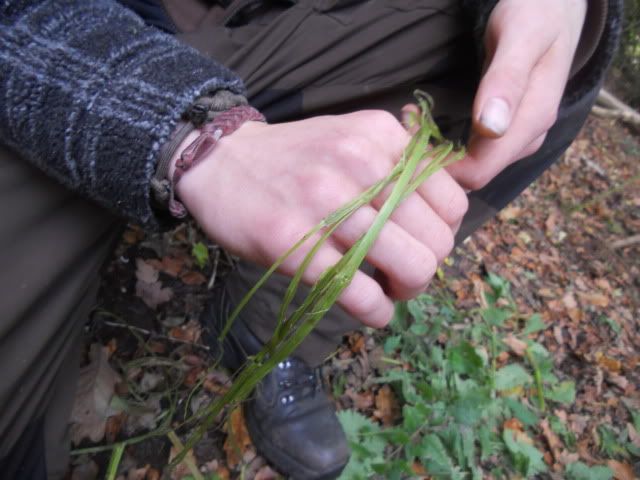
now i have my fibres ready i will hang them up to dry over night, because if i where to bind them into cordage whilst they are too wet they are liable to separate and break.
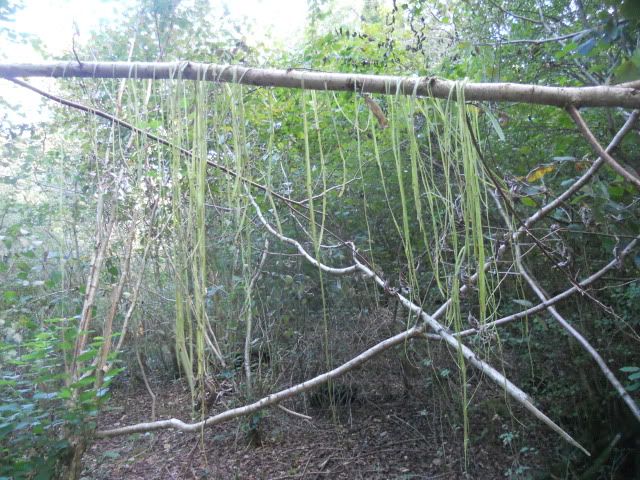
i will continue this once my fibres have dryed
After a Night of drying, the nettle fibres appear thinner, this is a good chance to suss out which fibres you wish to use for your cordage. I went for resonably thin fibres to create a fine string.

I start by wetting the fibres slightly with a tiny bit of saliva, just to help the flexibility. then to produce the cordage i find the center of the fibre, fold it in half, and twist each half in the same direction, this forces the fibres to tightly twist together, making the cord much stronger and more durable.
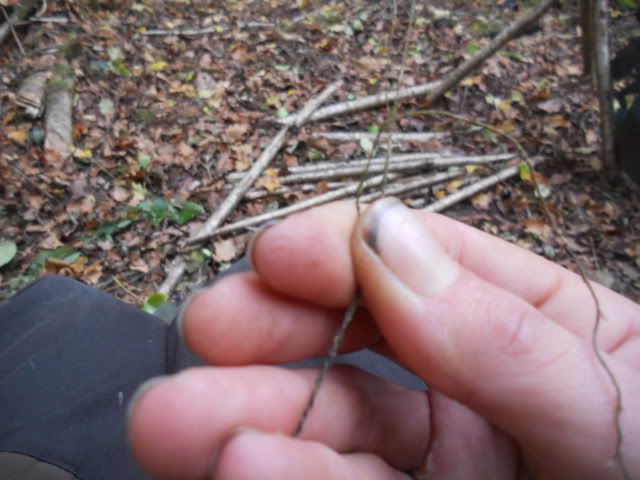
there are many different ways of doing this, many people find the best way is to roll the fibres on their legs, however i find it easier just rolling the fibres with my fingertips.
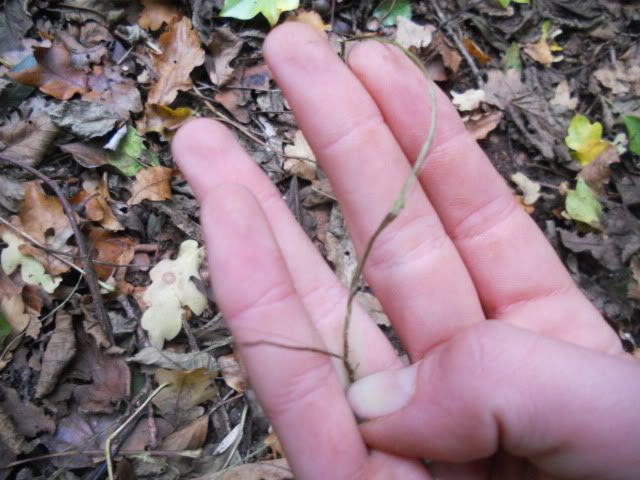
every so often you will find that you will need to add a new fibre to extend the length of the cordage, the way i do this is to wrap the new fibre around the shortest existing fibre and carry on twisting as normal.
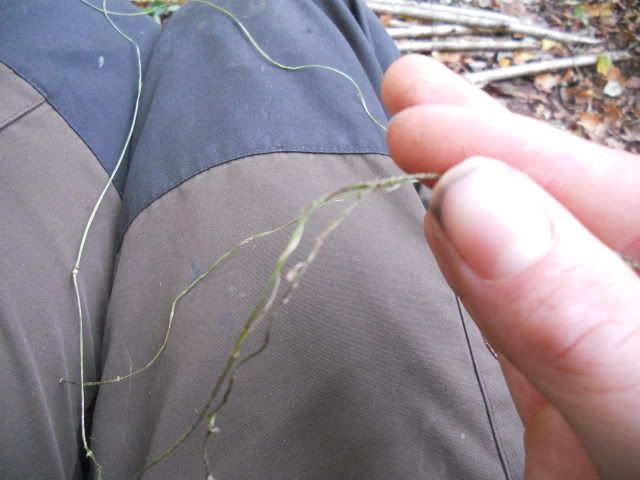
When the cord gets so long that it trails on the floor, the best thing to do is to wrap the end around a twig, this keeps it neat, keeps tension and allows it to twist when needed which prevents it from unbinding.
the Cordage is finaly finished, all two metres on it. ready to be used for primitive fishing, repairing or binding.
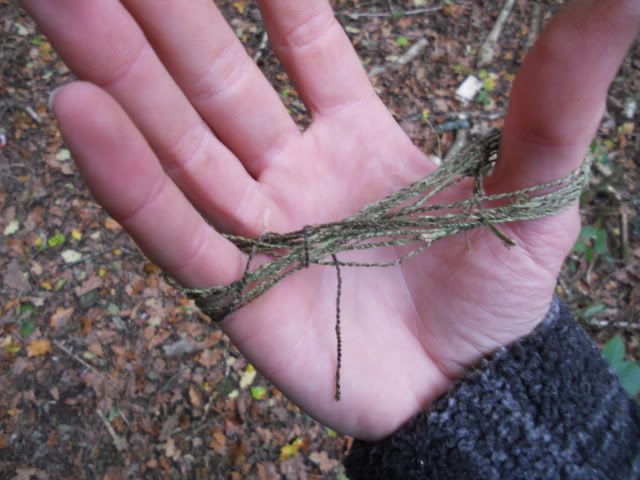
mid september and october are the best months to harvist nettles for their fibres, as they have had all spring and summer to grow to a large size yet they should still be alive and unwilted by the frost.when harvesting nettles i find that the side of rides and paths to be the best place, as the large quanitiy of avalible light allows the nettles to grow very large very quickly, larger plants mean longer fibres which makes cordage making alot easier.
Rather than clearing out a large clump of nettles it is more economical to walk along the ride and pick only the best examples of nettles, these will be tall nettles with thick stalks. the ones to avoid are the thin soft nettles and the dry ones that have started to wilt and die.

now there is a method of picking and processing stinging nettles with bare hands without getting stung, for this you will need to grab the plant firmly at the base with one hand and with the other strip the laves off in the direction of the plants growth. despite this method, im going to wear some thick gardening gloves to reduce the chance of being stung even more.

I am going to be making two metres of nettle cordage so im going to collect roughly ten nettles, a good rule of thumb is to harvist more nettles than you think you will need.

Now i Have collected my nettles the next job is to strip them of thieir leaves, i do this by grasping the base of the nettle firmly with one hand, then i firmly brush the other hand up the nettle in the direction of the plants growth, this will strip the nettle of its leaves and leave me with a clean stalk to work with.

now that the nettles are striped of their leaves that brings me onto the next process, splitting the stem of the nettle.
the best way to do this is with the butt of a knife against a hard surface. I hold the stem of the nettle against the block, and with the butt of my knife i push down on the nettle firmly, working my way up the stem from the base.

The next process is removing the pith from the nettle. To do this i run my finger down the splits in the stem, graduably opening the stem out.

Then i hold the stem with the pith facing up and break it in such a way that the pith snaps but the fibres on the outside of the stem remain intact. Then i peel away the pith with my fingers and disgard it. as its the fibres i need for the cordage.

now that i have my fibres separated from the stem i will peel them away from each other carefully, creating gradualy thinner fibres yet trying my hardest to keep them as long as possible.

now i have my fibres ready i will hang them up to dry over night, because if i where to bind them into cordage whilst they are too wet they are liable to separate and break.

i will continue this once my fibres have dryed
After a Night of drying, the nettle fibres appear thinner, this is a good chance to suss out which fibres you wish to use for your cordage. I went for resonably thin fibres to create a fine string.

I start by wetting the fibres slightly with a tiny bit of saliva, just to help the flexibility. then to produce the cordage i find the center of the fibre, fold it in half, and twist each half in the same direction, this forces the fibres to tightly twist together, making the cord much stronger and more durable.

there are many different ways of doing this, many people find the best way is to roll the fibres on their legs, however i find it easier just rolling the fibres with my fingertips.

every so often you will find that you will need to add a new fibre to extend the length of the cordage, the way i do this is to wrap the new fibre around the shortest existing fibre and carry on twisting as normal.

When the cord gets so long that it trails on the floor, the best thing to do is to wrap the end around a twig, this keeps it neat, keeps tension and allows it to twist when needed which prevents it from unbinding.
the Cordage is finaly finished, all two metres on it. ready to be used for primitive fishing, repairing or binding.

Last edited:


